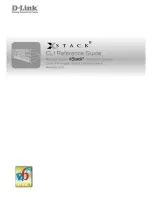
27
Current diagnostic parameters:
Temp.(°C) Voltage(V) Bias(mA) RX power(dBm) TX power(dBm)
43 3.31 6.23 -6.50 -2.15
Alarm thresholds:
Temp(°C) Voltage(V) Bias(mA) RX power(dBM) TX power(dBM)
High 75 -63 10.50 2.00 1.50
Low -5 2.97 2.00 -13.90 -11
b.
If the optical power of the transceiver module is not within the correct range, replace the
transceiver module with a transceiver module of the same model that is operating correctly.
3.
Verify that the port configurations are correct:
a.
Execute the
display interface brief
command.
b.
Determine whether the speed and duplex mode of the port match the speed and duplex
mode of the peer port.
c.
If they do not match, use the
speed
command and the
duplex
command to set the speed
and duplex mode for the port.
4.
Verify that the link medium connected to the port is operating correctly.
Plug the link medium into a new port that is operating correctly. If error frames still exist, replace
the link medium.
5.
Verify that the port is operating correctly:
{
If the port is a copper port, connect the port directly to a PC.
{
If the port is a fiber port, replace the transceiver module in the port.
If error frames do not exist, troubleshoot the remaining possible points of failure on the
transmission path. The troubleshooting process is beyond the scope of this document.
6.
Determine whether the port has received a large amount of flow control frames:
a.
Use the
display interface
command to view the number of pause frames.
If the number of pause frames is accumulating, you can determine that the port has sent or
received a large amount of flow control frames.
b.
Verify that the incoming traffic and outgoing traffic have not exceeded the maximum traffic
processing capability of the local device and the peer device.
7.
If the problem persists, contact H3C Support.
Failure to receive packets
Symptom
A port is up, but it cannot receive packets.
















































